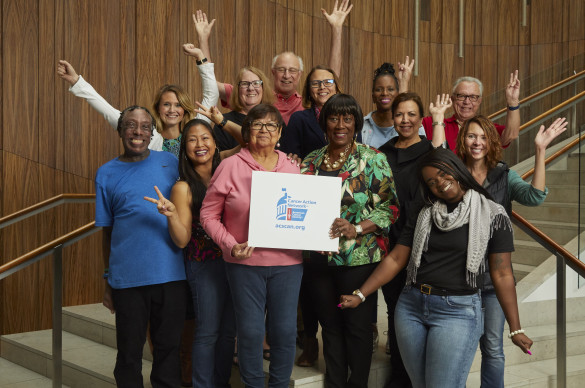Gail Carey of Long Island, New York, understands the value of hard work and personal responsibility. As one of nine children, Gail quickly learned the importance of helping out around the house, especially since both of her parents worked. When her mother developed emphysema and had to stop working, Gail and her family struggled financially. Gail's parents later separated, forcing Gail's mother and her kids to turn to Medicaid for health coverage.
Gail's mother was always careful to remind her children that Medicaid was a temporary remedy, not a permanent solution. After her mother's death, Gail was inspired to find a good job that would give her health benefits. She found such a post in an advertising and trade show company in New York.
After the attacks of 9/11, the New York trade show market collapsed and Gail and 90 percent of her co-workers lost their jobs. Losing a job also meant losing insurance benefits. Gail and her husband had separated the year before the attacks, and she had no one to rely on for assistance. A few weeks after losing her job, she found a lump in her breast.
Gail knew that she needed immediate medical attention, thanks to her previous experience in the mammography division of a health care facility. But she had to get insurance first. After a couple months of job hunting, Gail was hired by a company that promised health insurance after three months. Gail waited the three months before inquiring with her employer about health benefits. Gail implied that she had a health issue that needed to be addressed immediately. Instead of receiving the benefits she was promised, she received a pink slip.
Five months had elapsed since Gail first found the lump, and she was still uninsured. "[Five months] could be the difference between life and death, so I was really playing with a loaded gun," she said. Then a friend told Gail about a program called "The Healthy Women's Partnership," New York's version of the National Breast and Cervical Cancer Early Detection Program (NBCCEDP) that provides low-income, uninsured women with free or low-cost breast and cervical cancer screenings. The program, administered by the Centers for Disease Control and Prevention (CDC), was created to assist medically underserved women in getting screened for cancer.
Gail was sent to a hospital that supported the program and was assigned to Maureen Massellaro, a patient navigator from the American Cancer Society. Maureen assisted Gail in finding a surgeon and getting the screening process underway. Doctors confirmed the lump discovered in Gail's breast was in fact cancerous. Her surgeon, Dr. Capizzi, performed a partial mastectomy, but he feared that the cancer had not been entirely removed, so he performed a follow-up full mastectomy. All of the follow-up treatment, including medications, was covered by Medicaid, thanks to the Breast and Cervical Cancer Prevention and Treatment Act. This law, enacted in 2000, gives states the option to ensure Medicaid coverage of treatment for women diagnosed with cancer through the CDC program. All 50 states and the District of Columbia have implemented this option.
Gail says she feels blessed to have found the CDC program that covered her screening and the Medicaid program that covered her treatment. Without them, she likely would not have survived. "Throughout this whole ordeal, I was treated with such dignity," she said. "This program is a phenomenon. I was going to die because I didn't have coverage, and nobody should have that option."

